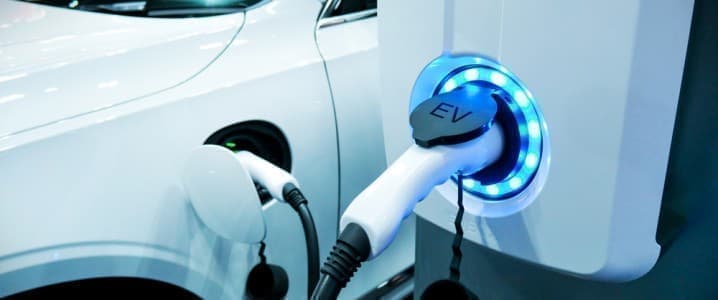As the first country in the world to ban the import of petrol and diesel vehicles, Ethiopia is creating the blueprint for electric vehicle (EV) uptake, supported by favourable government policies. It is one of several African countries to be introducing incentives to encourage EV uptake as a means of reducing fuel dependency and supporting green transport growth.
In January 2024, Ethiopia became the first country in the world to ban the import of petrol and diesel vehicles, in a bid to reduce its fuel dependence and pollution. The government aims to import 500,000 EVs by 2030 as it encourages greater uptake across the country. While many Ethiopians were initially reluctant to switch to EV, they are becoming a much more common sight in the capital of Addis Ababa, and public perception is slowly shifting.
In Africa, the EV market size is approximately $450 million in 2025, and it is forecast to reach $4.2 billion by 2030, growing at a CAGR of 56.3 percent between 2025 and 2030. China is expected to become a major exporter of EVs to Africa as it continues to grow its presence in the global EV market. Although the African EV market remains small, government incentives and the growing need for more sustainable transport options are gradually leading to increased uptake across the region.
Chinese, European, and African companies are investing in regional battery and vehicle assembly capacity to drive down costs and encourage uptake across the region. Meanwhile, several national policies, such as Ethiopia’s internal combustion engine (ICE) vehicle ban, Ghana’s eight-year zero-tariff window, and South Africa’s production rebates, are encouraging more consumers to invest in EVs in certain parts of the continent.
To date, passenger cars have led Africa’s EV market, with a 61.81 percent share in 2024. However, there is a growing interest in two- and three-wheelers, with the market expected to grow at a CAGR of 59.72 percent between 2025 and 2030. While Ghana was the leader for EV uptake in 2024, with a 29.31 percent share of the continent’s EV revenue, Ethiopia is now the fastest-growing country for EV uptake, with an anticipated CAGR of 58.92 percent through 2030.
Before the introduction of the ICE vehicle import ban, EVs were extremely uncommon in Ethiopia. As uptake increases, it is becoming more common to see China’s BYD brand, the current market leader, dotted around Addis Ababa. There are also a range of well-known European EV brands making their way to the Ethiopian market. There are now around 115,000 EVs in Ethiopia, out of a total of 1.5 million cars across the country.
When the ICE import ban was initially proposed, many were sceptical as around half of all Ethiopians still do not have access to electricity, and just 20 percent of households have access for at least 23 hours a day. Only a third of households have access through the national electric grid and the country is plagued with regular power cuts.
The situation is expected to improve following the opening of the Ethiopian Grand Renaissance Dam in September, 14 years after it began being developed and following several delays. The dam has a maximum capacity of 5,150 MW, doubling the country’s current electricity output, of which around 97 percent comes from hydropower. However, enhancing access is a complex issue as Ethiopia requires billions of dollars in investment to improve its electric grid to the standard needed to provide both urban and rural areas with a stable supply of electricity.
Nevertheless, the government decided that banning ICE vehicles in favour of EVs would help reduce pollution as well as significantly reduce the country’s fuel dependency, with Ethiopia spending around $4.5 billion a year on fuel imports. For a country that relies heavily on cheap, green hydropower for fuel, its dependency on fuel imports to power transport is economically unsustainable.
The government has introduced a range of financial incentives to encourage EV uptake. Including sweeping tax exemptions. While the upfront cost remains extremely high for most Ethiopians, the cost of second-hand ICE vehicles has also soared since the import ban. The government also hopes to encourage the development of domestic EV production and assembly, although this is in the nascent stage.
To support the switch, the government must now invest in the rollout of charging stations and other critical infrastructure. Ethiopia currently has around 100 charging stations, most of them in Addis Ababa, with the government hoping to increase this figure to 2,300. This limits uptake outside of the capital, where electricity access is more limited.
The introduction of an ICE vehicle import ban has drawn attention to Ethiopia, as the first country in the world to introduce a measure that many governments are targeting for the 2030s. While infrastructure remains a major constraint to EV uptake, it demonstrates how favourable policies, financial incentives and investment in infrastructure could spur rapid change in auto-markets worldwide.
By Felicity Bradstock for Oilprice.com
More Top Reads From Oilprice.com:
Oilprice Intelligence brings you the signals before they become front-page news. This is the same expert analysis read by veteran traders and political advisors. Get it free, twice a week, and you’ll always know why the market is moving before everyone else.
You get the geopolitical intelligence, the hidden inventory data, and the market whispers that move billions – and we’ll send you $389 in premium energy intelligence, on us, just for subscribing. Join 400,000+ readers today. Get access immediately by clicking here.
Source link
Visited 2 times, 1 visit(s) today


